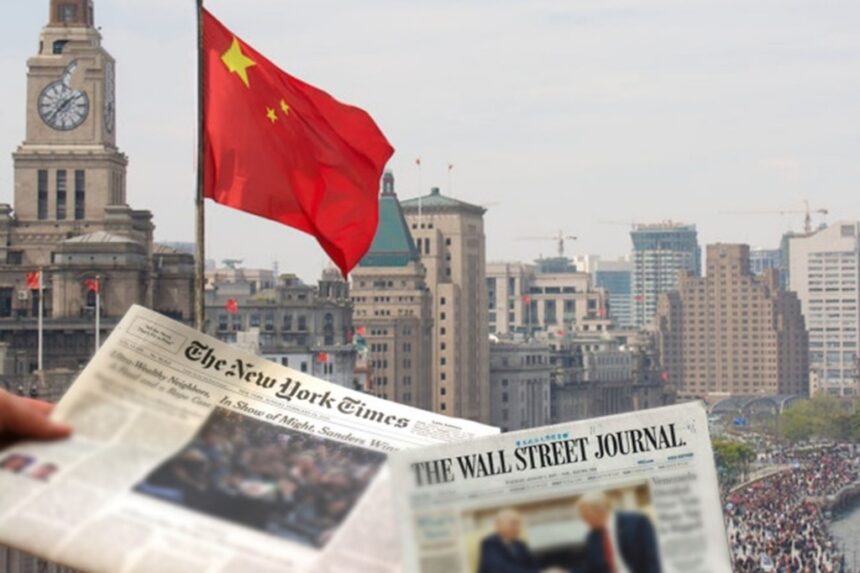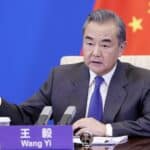NEW YORK – Concerns have grown in North America about China’s growing footprint within the United States, especially when it comes to media and university campuses. Journalists and watchdogs have pointed out that the Chinese Communist Party (CCP) invests heavily to manage its image in the U.S., using both financial rewards and subtle pressure.
These efforts are changing how China is discussed in American newsrooms and classrooms. This article breaks down how China uses money and influence, explores the part business decisions play in this, looks at what’s happening in universities, and covers how the Trump administration has tried to push back.
How China Invests in U.S. Media
State-backed outlets like China Daily have spent millions to get content published in U.S. newspapers and magazines. U.S. Justice Department records from the Foreign Agents Registration Act (FARA) show China Daily paid out large sums from 2016 to 2020.
These payments include:
- $4.6 million to The Washington Post
- Nearly $6 million to The Wall Street Journal
- $700,000 to TIME Magazine
- $272,000 to the Los Angeles Times
- $291,000 to Foreign Policy
These funds were used for China Watch, a branded supplement that looks like regular news but follows Beijing’s preferred storylines. These inserts showcase a positive view of Chinese society and play down complicated topics, such as human rights or high-profile political tensions.
While some outlets have cut back on these inserts due to new transparency rules, China still manages to get its message out.
China has grown its reach beyond print as well. State channels like CGTN and Xinhua have built up their digital and broadcast platforms in the U.S., promoting messages that align with Beijing’s goals.
A 2023 State Department investigation found China spends billions each year worldwide to sway public opinion, including buying interests in foreign media. They aim to drown out negative coverage and replace it with softer stories about China’s policies.
Profit Motives and the Spread of Propaganda
U.S. media outlets haven’t been shy about accepting this money. Financial struggles in the industry have made it hard for some news organizations to turn down the steady revenue that these partnerships provide. Some media executives seem willing to trade their independence for much-needed cash.
Critics say this puts American newsrooms at risk of becoming a mouthpiece for the CCP. A 2019 case at ESPN sparked debate when leadership there told staff to steer clear of political talk about China and Hong Kong during the NBA protests.
They went as far as to display a map showing Taiwan as part of China, a move previously seen only in Chinese media. Events like this show how profit goals can sometimes outweigh the duty to be neutral and accurate.
This pattern is bigger than just the media. American companies across various industries have given in to pressure from Beijing to avoid upsetting Chinese officials. Some airlines and clothing brands, for instance, have changed their websites to list Taiwan under China after getting pressure. The promise of continued business causes many to overlook important issues and helps China shape stories indirectly through economics.
Chinese Presence on College Campuses
China’s push is not limited to journalism; it also targets higher education. Universities have become more financially dependent on Chinese government funding and academic partnerships. Groups like the Chinese Students and Scholars Association (CSSA) and Confucius Institutes have been key players behind the scenes.
Confucius Institutes, funded by the CCP through Hanban (now under the Ministry of Education), have operated at many American colleges, providing language and culture classes.
Critics warn that these institutes promote a watered-down version of Chinese culture that ignores topics the CCP finds sensitive, like Tibet, Taiwan, or the 1989 Tiananmen Square crackdown. By 2020, more than 100 Confucius Institutes could be found at U.S. schools, but scrutiny led to many shutting down after government pressure.
Universities have also accepted grants and donations through groups like the China-United States Exchange Foundation (CUSEF), tied to the United Front Work Department.
Chinese Surveillance
Some funds have been directed to historically Black colleges, aiming to build connections and promote “balanced” opinions that echo Chinese government talking points. For example, a 2019–2020 contract gave over $300,000 to Wilson Global Communications USA to improve China’s reputation among African American communities and students.
China also tries to keep tabs on the many Chinese students studying in the U.S. (over 300,000 in recent years). Through the CSSA, the CCP tracks what students do and say, and may pressure them to avoid public criticism of Beijing or to keep an eye on others.
This often leads to worries about free speech and open debate on campuses. Chinese academics have also reported harassment or trouble getting visas if seen as critics of China.
Concerns about security and technology theft in research have also grown. The FBI has flagged several cases where Chinese researchers in the U.S. sent sensitive innovations back home. The arrest of Chengxuan Han, for instance, highlighted the risk of biological research leaving U.S. labs for China.
Trump Administration’s Approach
The Trump administration has described China’s influence efforts as a matter of national security. Since 2017 and again after returning in 2025, the White House has pushed aggressive steps to counter these campaigns.
FARA rules now require more open disclosure about payments from China to U.S. outlets. This deeper look into financial ties has made some newspapers drop China Watch and similar content due to public backlash.
Chinese outlets like CGTN and Xinhua have also been labelled as foreign missions, putting tighter government controls on their activities in the U.S.
In 2025, the Trump White House slashed budgets for U.S.-funded broadcasters like Voice of America and Radio Free Asia. Critics warn that this hands more influence to China’s growing state media while American stations lose their ability to shape stories worldwide.
Trump officials defend these cuts as part of an “America First” focus on spending at home while using other tools, such as trade rules and technical barriers, to push back on China.
The administration has placed more scrutiny on academic links with China. The “China Initiative” began under the Justice Department during Trump’s first term to stop technology theft in higher education, though it drew criticism for unfairly targeting Chinese-American researchers.
After 2025, these efforts ramped up again, including cancelling student visas for Chinese nationals in sensitive research and limiting university collaborations.
China Stealing Technology
Export laws have also been tightened, stopping China from getting access to certain technologies, such as semiconductors and software for artificial intelligence. Since 2020, the U.S. has viewed Hong Kong as the same as mainland China for these rules.
The goal is to protect American innovations and stop their use by China’s military or large industries.
Trump’s trade team raised tariffs on many Chinese imports, at one point reaching 145% before dropping to around 30% after a deal. These measures are meant to make the U.S. less reliant on China and limit its role in global markets.
The administration has targeted supply chains and key minerals, encouraging more production at home. Still, some worry that these moves disrupt U.S. business and could push consumer prices up.
The tough policies have not gone without objections. Some say that pulling the U.S. out of groups like UNESCO and cutting back on aid just makes it easier for China to expand its influence.
For example, China promotes its Belt and Road Initiative and Global Civilization Initiative through the same international groups the U.S. is leaving. Budget cuts for programs like USAID and Voice of America have also weakened the U.S. voice in world affairs.
China’s Growing Impact
These moves have sometimes upset U.S. allies, who have turned to China for new trade deals after getting hit with American tariffs. Countries like Japan, South Korea, and the European Union have deepened business ties with Beijing, making it harder to isolate China.
The push for economic separation has also made it more expensive for American companies and shoppers who depend on Chinese parts and products.
China’s growing impact in U.S. media and higher education weaves money, messaging, and partnerships into a mix that shapes public stories and mutes opposing views. Short-sighted pursuit of profits and campus funding gaps have opened the door for Chinese influence.
The Trump administration’s response uses transparency laws, stricter academic rules, and tough trade tactics to fight back. But critics say these steps could harm America’s influence and unity with key partners.
The U.S. and China are locked in a contest over ideas, trade, and technology. To address China’s influence smartly, the U.S. needs to protect openness and national safety without blocking academic freedom or upsetting friends abroad. The direction these efforts take will help decide both countries’ roles in the world for years to come.














